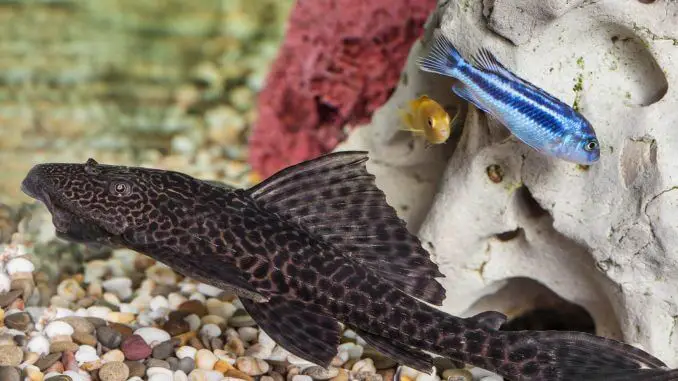
The plecostomus, or pleco, is a freshwater species of armored catfish belonging to the Loricariidae family. There are more than 150 species of plecos identified today.
Plecos come in a range of colors and patterns, and all plecos have elongated bodies with four rows of bone plates and large, curved fins. They help keep the tank clean by eating algae and unwanted food that sinks to the bottom of the tank.
Plecos are a popular choice amongst aquarists because of their unique appearance and tank-cleaning abilities.
TABLE OF CONTENTS
Plecostomus Facts & Overview
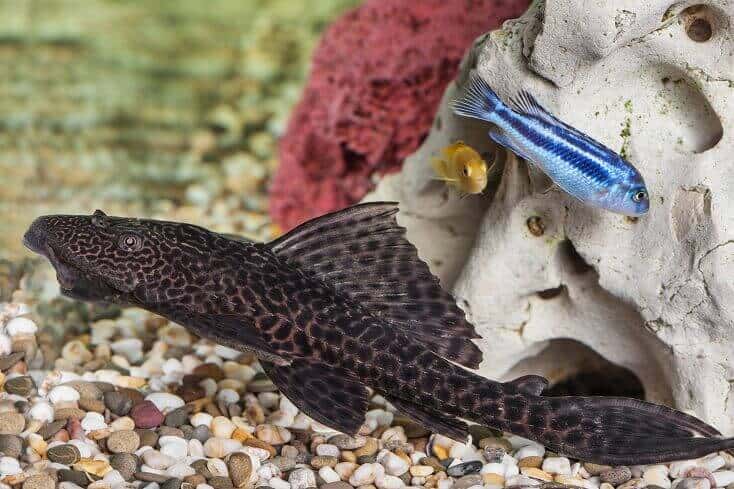
| Scientific name: | Hypostomus plecostomus |
| Common names | Plecostomus, plecostomus catfish, pleco, janitor fish, algae sucker/eater, pez diablo (devil fish) |
| Distribution: | Suriname, French Guinea, Guyana |
| Size: | 20–24 inches |
| Life expectancy: | 10–15 years |
| Color: | Brown, sand, gray |
| Diet: | Omnivore |
| Temperament: | Peaceful |
| Minimum tank size: | 30 gallons |
| Temperature: | 72–86°F (22–30°C) |
| pH: | 6.5–7.5 |
| Hardness: | 20–35 dGH |
| Care level: | Easy |
| Breeding: | Egg-scatterer |
Origin
Plecostomus catfish are found in freshwater rivers and streams in South America and West Africa. Plecos can withstand a range of water parameters in the wild and in captivity.
Plecos live in fresh and brackish water and survive seasons of drought by storing oxygen in their bellies and breathing through their skin. When its habitat dries up, the pleco can survive for up to 30 hours without water and wriggle across dry land in search of a new pool.
Plecos are common in the wild, and, since being introduced to US waters, the fish are some of the most geographically widespread species of their Loricariidae family.
Adult Size & Lifespan
Adult plecos grow up to 24 inches in length. Some plecostomus catfish are even longer than this — for instance, the pseudacanthicus major (not a popular home aquarium fish) grows up to 30 inches in length.
Plecos are sexually dimorphic, meaning there is a difference in appearance between the males and the females. Male plecostomus catfish grow larger and longer than females.
In an aquarium, plecos don’t grow as large as they do in the wild. Most fish in captivity stop growing when they reach 15 inches long.
The lifespan of a plecostomus in captivity is 10–15 years. In the wild, plecos can live even longer than 15 years because the fish aren’t at risk of common aquarium diseases.
Availability
The plecostomus is one of the most popular, and most widely available aquarium fish. You should easily find at least one type of pleco in your local pet store, and a large variety of fish online.
The average cost of a plecostomus is $7–$35, depending on how rare and exotic the species is. Some plecos cost more than $200 due to the cost of breeding and raising the fish.
- Imperial Tropicals sells several plecostomus catfish, including the green spotted bushynose plecostomus and the rhino pleco.
- Live Aquaria sells more than 10 types of plecos, including the sailfin plecostomus, the trinidad plecostomus, and the black and white royal tiger plecostomus.
Appearance & Behavior
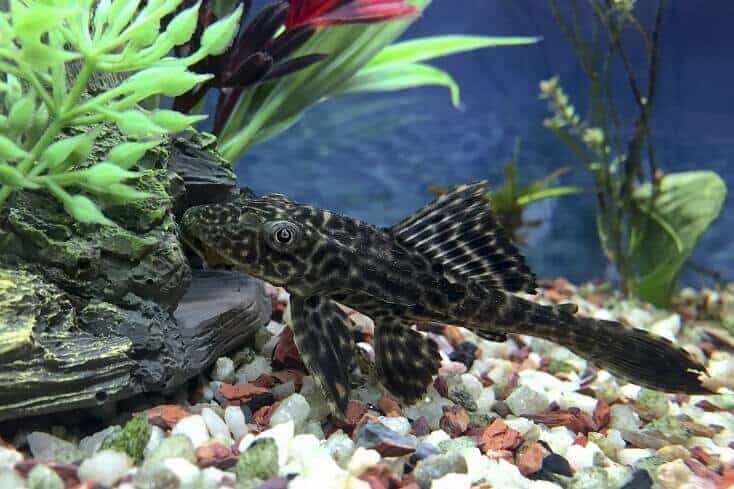
Plecostomus catfish have flat, elongated bodies and are usually gray or brown in color, with black or dark brown markings. Plecos are peaceful fish with aggressive and territorial tendencies.
Colors, Patterns, Fins, and Sex Differences
Plecos are found in shades of brown and gray, olive, and other shades of camouflage, with wide heads and long, narrow bodies.
The plecostomus catfish has no scales. Instead, the fish’s body is covered by tough, armored plates.
Some of the most common types of plecostomus catfish are:
- Common pleco – grows up to 24 inches long and has a dark brown body with black markings.
- Snowball pleco – black or dark gray in color with white spots or “snowballs” covering its body.
- Candy-striped pleco, which has a pale, sand-colored body with vertical black stripes.
- Zebra pleco – a very small species with vibrant white stripes covering its body.
- Vampire pleco – grows up to 10 inches long and has a shiny black body with white spots.
- Sailfin pleco – has a longer-than-average dorsal fin with ten or more rays.
- Bristlenose pleco – only grows up to around 5 inches in length, but has distinct bristles protruding from its mouth and nose.
- Gold nugget pleco – grows up to 9 inches in length and has a black or brown body with distinct yellow spots and markings.
- Butterfly pleco – ranges in color from tan to chocolate brown and has distinct symmetrical black stripes.
- Rubber lip pleco – has big, soft rubbery lips that protrude from its face. It also has a soft gray color that looks slightly blue or green.
- Royal pleco – grows up to 17 inches and is grayish-brown with horizontal stripes and red eyes.
- Blue phantom pleco – grows up to 7.5 inches and is deep, cobalt blue in color.
Male plecostomus catfish grow larger than females, and females have a more rounded body than males.
When stressed, the plecostomus catfish’s color fades. Plecos also change color when they are hiding or sulking.
Typical Behavior
Plecos are peaceful fish that can be housed in a community tank. However, stress, competition over food and breeding, and unpleasant tank conditions cause the fish to show their aggressive and territorial sides by chasing and pushing one another around.
Plecos are also known to wound other fish like goldfish and discus fish by sucking their slime coats off of them.
A plecostomus spends most of its time slowly swimming along the bottom of the tank. When water oxygen levels drop, the pleco swims to the surface to breathe air.
Plecos are naturally nocturnal. They spend the daylight hours hiding in caves or deep burrows in the substrate and emerge at night for food.
Plecostomus Care & Tank Requirements
The plecostomus is easy to look after and doesn’t have complex care needs. In the wild, plecostomus catfish are found in fresh and brackish water and prefer fast-flowing streams with pebbly riverbeds. You should provide a similar tank environment to make your plecostomus feel at home.
Feed plecostomus catfish a diet of plants, wood fiber, and crustaceans.
Habitat and Tank Requirements
The natural habitat of a plecostomus is fast-flowing rivers in tropical climates. Mimic this environment in the tank with suitable substrate and decorations.
Plecostomus catfish don’t need substrate, but because plecos swim at the bottom of the tank and enjoy burrowing, a substrate is preferred. Use a combination of gravel, rocks, and clay to replicate the pleco’s habitat in the wild.
Adding live plants to your plecostomus tank provides a food source and a space for the plecos to hide in. Plecostomus catfish are known to rip plants out of the substrate, so choose hardy, deep-rooted plants like Java fern, Amazon sword, and anubias.
Decorative ornaments like caves, castles, and shipwrecks provide great hiding options for plecostomus catfish. Most plecos love eating and resting on pieces of driftwood, so add these to your tank too.
Your pleco’s tank should be at least 30 gallons and should be longer than it is wide. Plecos are larger than most aquarium fish and are used to having lots of space to explore. A 100-gallon tank is ideal for most plecostomus catfish, as this size gives the fish plenty of room to move and grow.
Because of their large size, plecostomus catfish are better suited to experienced fishkeepers who have the space and money to raise a large fish breed.
Tank Conditions
The ideal tank conditions for a plecostomus are:
| Water type: | Moderately hard, freshwater |
| Tank size: | Minimum 30 gallons, preferably 100 gallons as the fish grows, and an extra 30 gallons of water for every additional pleco |
| Water temperature: | 73–82°F |
| Substrate: | Gravel, pebbles, clay |
| Tank setup: | Deep-rooted plants, caves |
| Acidity: | 7.0–8.0 pH |
| Water hardness: | 20–35 dkH |
| Filter: | Yes, a strong filter with a good flow will maintain good water quality |
| Bubbler: | Yes, preferable for oxygen circulation |
| Lighting: | No, only natural lighting is required to keep plants healthy |
| Water heater: | Yes, to ensure a consistently warm water temperature |
Aside from keeping consistent water parameters, make sure your tank has a good filtration system. Plecos produce a lot of waste and enjoy swimming in strong currents. A good filter provides a well-aerated current and ensures that the tank stays clean.
Disease
Plecostomus catfish help contribute to a disease-free tank by “cleaning” surfaces and eating leftover food and algae. However, plecos are still susceptible to several common freshwater diseases if poor tank conditions or unsuitable water parameters exist.
Ich
Ich, or white spot disease, is a parasitic disease caused by a protozoan called Ichthyophthirius multifiliis. This disease causes white spots on a fish’s body, and the affected fish will appear lethargic, lose its appetite, and rub its body against rough surfaces.
Quarantine fish affected with ich in a separate tank and add one tablespoon of salt to every five gallons of water to kill the protozoan. To speed up the lifespan of the protozoan, increase water temperature by two degrees.
Bacterial Diseases
There are several bacterial diseases that plecostomus catfish are susceptible to, including dropsy and fin rot. Plecostomus catfish are incredibly sensitive to changes in water conditions, and bacterial diseases can kill the fish in a matter of days.
Dropsy causes bloating and loss of coloration, and fin rot causes ragged, ripped, milky fins.
To treat bacterial diseases, make sure your water filter is working efficiently and carry out a 25% water change every day for several days. If the fish’s symptoms don’t improve, ask a representative at your local fish store for suitable medication.
Tank Mates
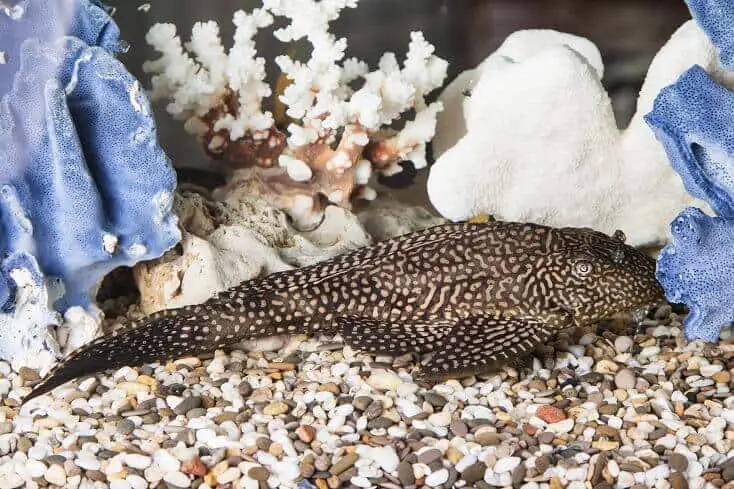
Plecostomus catfish are peaceful and sociable, and are rarely aggressive toward other fish. Plecos make for good tank mates for other peaceful fish that require the same water parameters.
Plecos are occasionally territorial and aggressive around food, during breeding, when housed with too many fish of their own kind, or if the tank is too small. Avoid fish mates that plecos see as competition, such as clown loaches, which are faster bottom-feeders than plecos.
Great tank mates for a plecostomus include:
Non-fish tank mates for a plecostomus include:
- Freshwater crabs
- Shrimp
Limit aggression between pleco fish by housing a maximum of two plecos in one tank. Don’t house plecostomus catfish with snails because the plecos will view the snails as food.
Diet and Feeding
Plecos are opportunistic scavengers and will eat anything they come across in the wild, including algae, wood, plant matter, and small insects.
You should replicate the pleco’s wild habitat diet in the tank. Read up on the pleco species you buy to determine exactly what you should feed your fish. For instance, some plecostomus catfish enjoy eating driftwood, while some plecos predominantly eat plants.
Provide your plecostomus catfish a combination of algae, plant matter, and plant-based foods, including spinach, zucchini, cucumbers, lettuce, and shelled peas.
Worms are a nutritious live food that sink to the bottom of the tank, making them a good choice for bottom-feeding plecos.
Because plecos are nocturnal, you should feed the fish at night, just before you turn off the tank lights. Add two pinches of food to the tank.
Breeding
Plecos are easy to breed, and most plecos don’t require a separate, dedicated breeding tank. To breed plecos, follow these steps:
- Place a male and female plecostomus aged at least one year in the same community tank (if the fish don’t already share a tank).
- Reduce the temperature of the tank by three degrees to mimic rainy season and to stimulate breeding.
- If the plecos are interested in breeding, the male will perform a mating dance and the pair will spawn. This usually happens at night.
- The female will scatter her eggs in caves and on flat rock surfaces.
- The eggs will hatch within one week. The fry are born independent and don’t require care from their parents.
Should You Get a Plecostomus for Your Aquarium?
Plecos are interesting, attractive fish with useful tank-cleaning abilities. You should get a plecostomus if you’re looking for a unique addition to your peaceful community tank.
However, plecos are intolerant to even the smallest tank water changes and require a large tank of up to 150 gallons. If you’re an inexperienced fishkeeper or you don’t have the space for a plecostomus tank, this fish isn’t the right choice for you.
Plecos are easy to keep and provide plenty of entertainment in a home aquarium.
Plecostomus FAQs
- Do bristlenose plecos need wood?
- What temperature do bristlenose plecos need?
- How fast do bristlenose plecos grow?
- How big does a bristlenose pleco get?
- How long does a bristlenose pleco live for?
- Can bristlenose plecos live alone?
- How many bristlenose plecos should be kept together?
- How many plecos can live together?
- Can I have two plecos in the same tank?
- Will plecos eat fish poop?
- What fish can be kept with plecos?
- Do pleco fish eat other fish?
- Are plecos good for fish tanks?
- Can plecos live with bettas?
- What is the best food for plecos?
- Does a plecostomus need a heater?
- Can plecos starve?
- Do you need to feed a plecostomus?
- How long until common pleco is full size?
- How do I know if my pleco is healthy?
- What is the lifespan of a pleco?
- How can I tell if my pleco is male or female?
- Can you put two plecos in the same tank?
- How do you take care of a plecostomus?
- Will a plecostomus eat other fish?
- How big do plecos get?
- Do plecos really clean your tank?

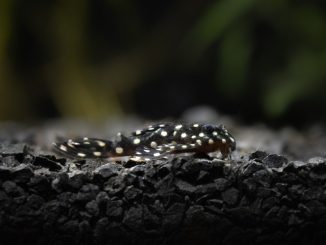
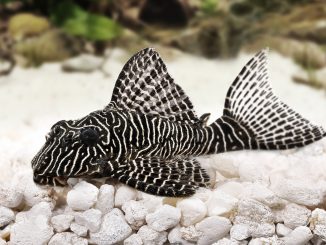
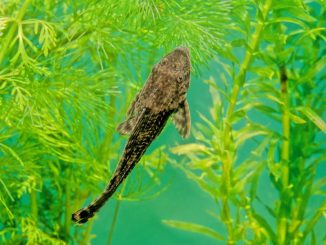
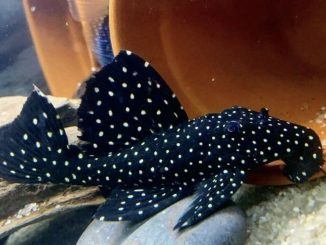
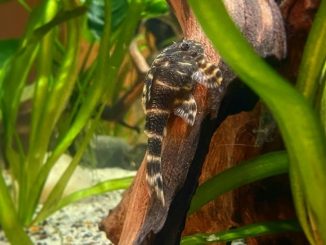
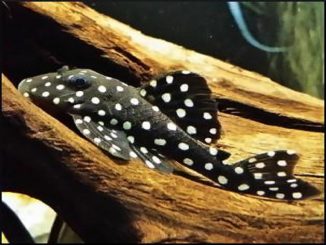
Hello. We have had an aquarium for, it seems, forever. Our son started it when he was a teenager, is 42 now. Anyway, we have grandchildren now who loved the aquarium when they were small and are now teens as well though don’t come around as often anymore or pay attention to the aquarium. I have taken over the duty of caring for these fishies, which I love doing btw. However, it has been a chore and worry for a while because there were two goldfish which grew to be about 10 inches and about an 8 inch. Also two Cory catfish, three hatchet fish and a pleco, very small at the time. I decided to bring the goldfish to a pond, which was sad because they were like pets, owned by a friend and they are thriving, thank goodness. Now the pleco has grown to be enormous, about 10 inches long. I read that it needs, at least, a 125 gallon n tank, but our is a 30 gallon tank. I can not have a larger tank though… the pleco seems to be doing very well though. Will it be all right to keep it. I would hate to get rid of it, he’s used to me now, I can tell when feeding time comes around.
Hello Wilhelmina,
It’s nice that so many of your family have been able to enjoy the aquarium. As we mention in the article, these fish are all too often sold to customers with smaller tanks. I always recommend opting for the minimum size tank for a species.
Robert
Thank you, Robert. The sad thing about the pleco is that he/she can not be put into a pond like the goldfish, which are cold water fish. I’ll make sure to take good care of him/her. He/she has a beautiful, large cave and plants. The two Cories have their own small cave and the 3 small hatchet fish swim at the top. All seem to be happy…so far.
Hello. I recently found one of my fish (goldfish) had died. I removed him, did a 25% water change after finding the ammonia
was way to high, and added the special water conditioners. My other fish (also a goldfish) and my Pleco are still acting lethargic. The goldfish is the worst right now, hes just sitting in one spot and getting pushed around by the bubbler. But I’m just as worried for my pleco as hes usually more active. Is there anything else I could be doing to help save these guys?
Hi Cathleen, sorry to hear this. As you’re probably aware, any trace of ammonia in the water is dangerous for fish. Here are a few suggestions: carry out another 25% water change, remove any uneaten food and clean the gravel. If you have any plants, remove any dead leaves or parts of the plants and reduce the amount you feed over the next few days. Thanks, Robert
I have a 70 gallon upright cylinder aquarium, and am the proud owner of a beautiful leopard sailfin pleco. I am realizing though that the gallon size does not really matter as much as the dimensions of your aquarium. With an upright cylinder shaped aquarium, you are really limited by the amount of floor space you have. (24” diameter). So, I am facing the realization that I will need to be rehoming my beautiful fish sometime in the near future as it is about 8” now. I am considering another aquarium, but am also considering a stock tank. But the bottom line is… a lot of pet shops and pet owners really only discuss aquariums in gallons when they should also discuss sq feet. Not all 70, 100, 125 gallon aquariums are created equal and provide the optimal living space for such large fish.
You’re very right! It’s a sad truth that unfortunately, many staff who work in pet stores are just not properly trained. I’m glad you had the foresight to research for yourself and make the best decision for your sailfin pleco! Robert
I purchased our Pleco named “PLuTO” from Wal-Mart nearly 3 years ago, as a pet for my young son.
Since our living space is limited, 1 gallon classic fishbowl was seemingly a good choice;) Although I purchased algae wafers, fresh spinach, couple of peas & cucumber, but our pleco (Aka. PluTo) refuses to eat those this food. PluTo diet consists Tetra Goldfish flakes 2x per day, ever since the 1st day I brought him home. ? I also, purchased dried shirmp food,to add some pritein, but suddenly it turned a completely different color (strange light tan color) and so I haven’t fed it shrimp eVer agAin; within a few hours, the condtion reverted & it was back to looking “normal” again.
[As for it’s living environment…] I replace the “tap-filtered” water/& clean the glass bowl about once a week; rinsing everything with hot water + a small amount of white vinegar. That’s it.
Our pleco seems “Happy”, never been sick and has out-lived 5 goldfish & a Chinese Mystery Snail, amazingly!
My only worry has been, if it’s getting enough food each day, because it hasn’t grown at all… I feed it couple times per day (morning when I wake/& the same at night, before I go to sleep). It never seems ravenous, but nevertheless it’s remained the same size ever since the day I brought it home.
Hi Barbara, what type of Pleco is it? A one gallon tank is too small for any breed of Pleco. At the bare minimum, they need around 10 – 25 gallons depending on the species. You might find that the tank size is whats preventing it from growing. Thanks, Robert
What will happen if the place is kept in this 1 gallon bowl? Dye? I have 5 gallon and little place, no sure which type. Have had him about 6 months. No growth, but seems happy. No room for bigger tank. He is my favorite. Also have a rabbit snail and 3 tetras, adults, according to pet store. Considering taking place back to pet store because was told inwards will grow even if outside body size doesn’t. If this true? If my “guy” is the smaller variety could I safely keep him in that 5 gallon? I would rather get rid of the tetras I just bought if that is the case. Actually I have a 7.5 gallon tank that isn’t as suitable for the place, low water flow and not as good filtering that I could set up somewhere for the tetras if I had to. Please respond, I hate the thought of me putting harm to this little guy. He is dark in color with tiny round spots that are tan in color, and had a single “whisker” on each side of his mouth. When I see his underside he is not attached by the mouth to the glass, his whole body is. I seen pictures of another fish , think it was called Fishkill that I thought looked like him.
Your pleco needs algae wafers.
Hi,
Just thought I’d share with you that our Plecos have bred. We have circa 15 young ones in the tank now and they’re great! I’d post a photo but don’t seem to be able.
Fantastic! I’d love to see a photo if you send them to [email protected] Thanks, Robert
I have two plecos and a Raphael catfish in a 55-gallon tank. I have to bring city water from a friend’s house because we have well water which is heavy in iron. When I first moved here, I set the tank up with well water and my poor fish, all cherry barbs, died overnight. Since then, for ten years I have filled and changed the water in my tank with city water. It’s a major chore. I recently moved the tropical fish to a 10-gallon tank, which is more manageable. I need to know if I can use well water for my plecos and catfish. We have shubunkins, goldfish, and a koi in pre-water softener well water, all thriving. Will the water, either pre- or post softener, kill the plecos and or the catfish?
Robert: Would you please send a response to my email in case I can’t find the website again?
Hello,
I don’t have much experience in using well water but I’d imagine if its heavy in iron it won’t be suitable for any of your fish. I’ll leave your comment here in case someone with experience of keeping fish in well water stumbles across it! Thanks, Robert
I use well water in my tank all three of my Plecos are fine. I use the water before it goes through the softener
You could do some research into plants that contain red coloration. I know that certain plants require an extra dose of iron in the fertilizer you use, so I would assume if you were to get plants that will pull out and utilize that iron and other trace minerals you could use your own water. Definitely worth testing out.
Hello, I have two tanks I run with well water. One is a 37 gallon with Electric yellow cichlids and a ten gallon community tank. I use a water conditioner when I do water changes. The ph in my water is a little high (7.4) but I haven’t had any problems in my community tank which has 8 guppies, one gourami and ghost shrimp. Cichlids prefer a high ph so also no problems there. I would highly recommend taking a water sample to your local fish store. Also, running your tap for a few minutes before using the water will keep the levels down of any metals present. I hope this helps!
I’ve kept Plecos in my 55g tank for 20 years (Slinky x9 yrs, Scribble X10+ yrs) and have always had well water. The old house had a water conditioning system. My new house is also well water (from the same underground aquifer) but no conditioning system. My fish have done fine at both places, without any treatment needed.
Well water varies by location, so it’s likely your high iron is due to your locale. Here may be a treatment available to remove iron and make it safe for your fish, not sure about that though. Have your water tested by a pond store or a reputable aquarium supply store for the best result.
I must applaud your devotion. Importing city water to clean your tank must be a hassle. I wouldn’t want to do it, and I really love my fish.
I have city water live in Florida i.e. had my place for 5 years now big boy is his name and one thing I learned quickly was be careful bc some city water has chlorine in it ours does I mean i rem when I filled up my 50 gallon tank omg I was like wow I had to use actually quite a bit more water conditioner than m I normally did with my 10g I always measure and if I didn’t end up adding 3x more about give or take my babies almost died well they s all did but big boy and ironically some dam tough gummies I’m about to cry just re telling this I know big boy survived bc of his size abs bc of the plates not knowing what chlorine on water can do tip them and hew did lose some skin bc it just almost me lm ts it off I just keep dumping more n more stud in until I knew I could no longer smell the chlorine and just prayed for the best my angel fish I had for 3 years gone ghost knife fish gone they’re just as my babies as well my baby lol
The Pleco I have now is kinda nuts. He is very active during the day and less at night. I have kept fish my whole life and never had one so active, especially during the day. He is well fed with a variety of food. Loves the part sand bottom on one half the tank and regularly demolishes my live plants. He is up to about 8” now. A beautiful fish.
My current 10 yr old pleco is fairly active during the day too. The pleco I had before him was definitely nocturnal.
Recently, my pleco has been aggressive with my Angelfish on two occasions. It really shocked me because they have been tank mates for several years without any issues. Not sure why he went wacko, but the angel stays away from him now.
We have a thirty-gallon tank that includes two plecos. One day, we were admiring the fish, and we noticed in the corners of the tank were a total of six baby plecos! After lots of ooohing and awwwing, we settled back with our coffee and thought how lucky we were! After checking on them multiple times during the day, today we noticed that all six seemed to gone. Oh no!! What happened? Should we have removed them from the tank? Please advise if you know anything about baby plecos. Thanks!
Hi Elizabeth, Are you sure they are common plecos? The reason I ask is that they are notoriously hard to breed in captivity, in fact it’s pretty much unheard of. Is it possible that they are Bristlenose Plecos? Thanks, Robert
Hi, me and my partner are about to buy a 200L aquarium tank. About 3ft 3 by 16inches. Would a fully grown common pleco manage in that tank?
Hi Peach, no they would definitely not be OK in a tank of this size, they require at least 150 gallons (around 560L) when fully grown. Thanks, Robert
Can a small plecostomus fit in a 20 gallon fish tank with a turtle (maybe two?) If not, can you recommend an algae eating fish that does? The turtle is not very big yet, maybe a 3 inch shell. I would like to get another small turtle as well. I do know that eventually I will need a bigger tank. Thanks!
Hi Amy, the minimum recommended tank size is 30 gallons for Plecos, and 40 gallons for turtles, so I certainly wouldn’t keep both in a 20 gallon tank. You can read our article here on turtle tanks for more suggestions on size and tank mates: https://www.fishkeepingworld.com/turtle-tank/
Amy, I have a common pleco in a tank with a yellow bellied slider. The slider is now 5 years old, and the pleco was added to the tank at the end of 2015. They are the only two in the tank with minimal decorations to save space, and it is a 75 gallon tank. They seem to thrive well together, but they both grew quickly which led to me getting a 75 gallon tank a year and a half ago. I’m sure they need a bigger one though. I would imagine two turtles alone would need a large tank, nonetheless two turtles and a pleco. If they do not have enough space to grow, they will not grow or thrive.
First thanks for a great web page, lots of good information
I am the owner of two “rescue” plecos that came from a 40 gallon tank, one is 12″ and the other 9″. The thing i like to add is, that Plecos are very adaptive, for example they now have a 180 gallon tank with “lots”(i still think the tank is to small for them) of places to hide, they don’t hide at all, they lie in the open or hang on the front glass most of the day, even with crayfish crawling around them. I like to think that they feel safe and therefore don’t need to hide.
Even when i clean the tank i sometimes have to “shovel” them out of the way with my hand, and then they really only move just enough.
So even though the information above is correct, there’s a huge difference in their behavior,
depending on their environment, which only makes them more interesting to watch.
I do recommend that when dealing with larger catfish, that you have a good spacing between the top glass and the water surface, or ( as i am forced to have) keep a lightweight top glass on your tank, mainly because like most catfish Plecos, occasionally like to make a small jump or surface turn grabbing a bite of air, So they don’t get hurt, this happens mostly at night so do keep a lid on, dont want a catfish on the floor to be the first thing you see in the morning:)
Hi Thore, thanks for sharing your experience. You’re definitely right about each individual fish having their own personality and behaviour. Thanks, Robert
I have a 6000 gal outdoor Koi pond in the Austin, TX area. Would 2 Plecos help me keep the alge growth down? Would the common plecos survive and grow in this enviroment. My Koi are healthy and growing.
Hi Tom, the water temperature will need to between 72°F and 86°F, with pH levels between 6.5-7.5. Is the water in the pond likely to dip below those temperatures over Winter in your area? If so, you’ll need to rehouse them over the winter period. The size of the pond is more than adequate, and they are compatible with Koi. Thanks, Robert
Thank you for a wonderful informative article. When I bought my daughter a 10 gallon tank for Christmas one year we went and got Glofish and of course a Pleco. Little did I know 3 years later I’d be purchasing a larger tank for this little Pleco. Store associates don’t tell you all this information. I purchased a 55 gallon tank for our Pleco (and believe it or not 2 glo fish from the original tank) who is now roughly 12-14 inches long. Since then I’ve started researching and learning a lot about Pleco’s. Again, thank you for the information. Do you know of any clubs or websites I could find more information?
My bristlenose plecos’ eggs recently hatched but my community neon tetras aggressively bully and eat them so i managed to put 4 of the newborns into a plastic ziplock bag(full of water of course). what should i do next?
Hi Ian, I’d be tempted to buy another tank which you can raise them in or take them to your local fish store if you’re unable to raise them. Thanks, Robert
Should I be worried about my pleco and angelfish in a 10 gallon? My angel fish hasn’t really grown for a few months and he is the same size..
Hi Henry, these fish should be in a tank which is a minimum of 30 gallons so I would move them ASAP. Thanks, Robert
Thank you so much
Hi. I am pretty new to keeping fish. All my fish appear very healthy so I guess I must be doing something right ?. I have 2 plecos in my tank, although I originally had only 1 I inherited another from my son when my grandchildren got bored with their aquarium tank. My tank is about 45 litres. I have 4 beautiful goldfish, 2 small guppy type fish and my 2 plecos in my tank. I have read your useful advice on keeping plecos and will be adding a few treats once a week for them. My question to you is how do you tell a male from a female pleco? Thanks Margaret Armstrong
Hi Margaret, it really depends on which type of Pleco it is as there are hundreds. Females generally have a plumper body, and males tend to be skinnier. Thanks, Robert
Hey Robert,
I just got a common place from a coworker who didn’t want it anymore. Stupidly, I decided to look up the care after I said I would love to have him (I think its male..). Anyways, its about 1 foot long already.. I have a 65 gal. tank and I’m wondering if he will be ok in there or if I should start saving for a bigger tank lol… Also some info I read and watched in videos said they can grow a little over 1 foot or even up to 3 feet long??.. or do they stay small depending on the tank size??.. is that info correct for Common Plecos? I’m so confused and don’t know what info to believe! You seem to know Plecos well …so I thought id ask.
Hi Katie, Common Plecos require a minimum tank size of 150 gallons when they mature. It’s true than they can reach large lengths, and although keeping them in a smaller tank will stunt their growth, this is extremely damaging for them. Many thanks, Robert
Hi. I am very happy to read that many other fish keepers love plecostomus. I have three in my 100 gallon tank. Two are clown plecostomus and one of these two have been in my tank since 1998. This old plecostomus did have a mate but they were very territorial but one died about 10 years ago. I purchased a second plecostomus and was told he was a clown one but he didn’t look like the one I had and is now about 12 inches long. My third was purchased for my kids that wanted the little plecostomus to have a buddy. Needless to say they have all lived in my tank peacefully for over 10 years. I only know they are around when I clean my tank and they scut off to avoid being seen. I am wondering how long they live for as most literature says 15 years but mine have surpassed that and is over 20 years old?
Hi Jen, on average Clown Plecos live until around 18 years, however there lifespan can be extended with excellent tank conditions and a good diet. Thanks, Robert
Hard breeders? I have a small 5 gallon desktop tank gravel base with just two hiding spots and some fake plants. Damn things must have been rabbits, I took babies to the pet store all the time to give them away in batches of around 20. I also keep 5 harlequin rasboras in the tank. I ended up giving the female away to not have to deal with them. My male is now over 6 years old and going strong. My oldest Rasbora is the same age as the male pleco.
I have 5 gallon tank. I bought some kind of place from pet store and have recently been told by their staff my tank is too small. Am I killing my place because of tiny tank? This is a chain store sad that staff is not trained better. I was trying to figure out which place he is with no luck, even found pictures of skillfish that resembles my little guy. He is about an inch in size and I have had him for 6 months or more, not sure. He is black with light colored tiny spots. I could send pictures. I hate to give him away but do not want to torture him if 5 gallon tank is too small. He is my favorite fish. Please help me and “Hudini”, thats what i named him because he hides so well i have trouble finding him and he blends in well with his enviroment. Thank you! Dorothy
I have 23 Koi’s and goldfish in a 75 Gal tank. I’ve had fish all my life,since the koi’s and my goldfish live in cold water is it gonna be a problem to buy 2 Plecos since the water temperature is totally different,and do you think I need them? Also we have city water and all I do is clean it once a week and feed them every 4 days I’ve gone up to a week…I have 11 babies that were a year old in November 2019 and my BIG BEAUTIFUL ones are 7 plus years old.
that’s way overstocked 75 gallons isn’t enough for a single koi they are strictly pond fish get him to a pond asap
Hi! Just want to ask for advice as I have 125L tank and got 5 corydoras, 11 neons, 5 gouramis, 2 Amano shrimps in it also live plants. I want to add few more fish. Would that be advisable?
Hi – I just purchased a tiny white bristle nose pleco. I have a 36 gallon tank with two 2″ goldfish. I’m afraid to drop the pleco in, will they eat him? He isn’t even 1/2″ long.
Does anyone have experience with plecos other than bristle nose breeding? My zebra pleco & my golden nugget pleco recently had babies to my complete surprise. No idea what to expect other than what people whose bristle noses have bred are posting. They’re in a 150 gal long ish tank with a bunch of assorted African cichlids & one Multipunctatus catfish. Just wondering how long they will need to grow big enough to avoid getting eaten.
Hi, my pleco zoomy,that i bought at pet smart, lives in a 10 gallon tank with some other small fish. He seems very happy and while sometimes he’s slow moving, other times he zooms across the tank, which is why we named him zoomy. His colors have seem to become more vibrant, so take that as he’s healthy. There’s times he’s laying under stuff and I swear he’s watching me feed everyone or move whatever needs adjusted in the tank lol
I have to plecos in my 50 gallon tank. They are exhibitionists! Constantly out scouring away at my tank and flaunting their beautiful selves all over the tank! I’ve had them about 4-5 months now and they are about 6 inches long.
I just started my new fish tank and have had it for about 4 days and my pleco has been in the log for 3 days(it’s not a real log btw) I drop down like 2 pellets and a wafer down in the hole but I can’t tell if he or she is eating because they both dissolve after a little and I don’t want to reach in and pick up the log. I haven’t been turning off the tank light I just decided to do it tonight to see if that was the case. Is this normal? Or should I be concerned?
Anybody know what kind of wood the pleco likes to chew on? Also that spell check wants to make pleco into place lol
My Place keeps lying on his back for long periods of time, halfway in his cave, He’s about 5 years old, is this a natural thing to do? He’s been doing this for about 3 weeks.
I have a Pleco and is 20 year old.Live in a 100 gallon tank.Well water around 8.8 and 8.9 I add carbonated water to try to keep it at 8.7 .Lots of work for that.I have a pipe where he hides. Nothing at the bottom.Clean every day his poop,he gets lettuce almost every day,palette algae and shrimps. So far so good.He is alone in the tank.I am worry about the ph but he sims fine.Eats ,poops. When I clean the filter he doesn’t like it but after few days it is back to normal.
I always have a hard time keeping plecos especially if I buy them small. they last awhile then all of a sudden there gone. I have one high fin that is big and loves zucchini . gold nuggets don’t last long. I would like to get a nugget but I don’t want it to die.theyre not cheap.
Hello, I was wondering if you could give some tips on what I can put in my 37 gallon aquarium. It has a wall bubbler and a waterfall decoration piece that is also a bubbler. It has a little Squidward house and regular aquarium gravel. I’ve never had an aquarium before so I’m finding it difficult to figure out what to put in it, and I’m interested in getting a fish that likes to clean the tank too. Thank you!
I have a couple of plecos in my fish tank with other fish. They are my favorite fish to watch because they are so interactive with each other, however, they are getting way to big for my tank. I’ve been trying to lure them into a large Mason Jar with Alge Pellets so I can put them in a bucket and take them to my aquarium store, but they seem to be so helplessly blind! An Alge Pellet can be right there in front of them and they don’t see it. Maybe it’s because their eyes on on top of their head and they can see in front of their own nose. Am I correct in that they can’t see their food very well?
I have had my plecos since 2001. I don’t do any thing but when i put water in i add water conditioner and keep at a 68 degrees his about 12 inches long in a 130 gal tank has not had any problems looks great. No special food i love my george (his name)
Hello. Plecos are some of the easiest fish to take of. I have had my “Clossy” since he was about 5 weeks old and he is now 12 years old. He gets along good with my Tetras and loves his food. They love driftwood also. He is about 16 inches long and is great at helping keep the tank clean. He does not like when I clean the tank. He starts flicking his tail and bumping my hand. We are glad we bought him all those years ago. He has grown so much.